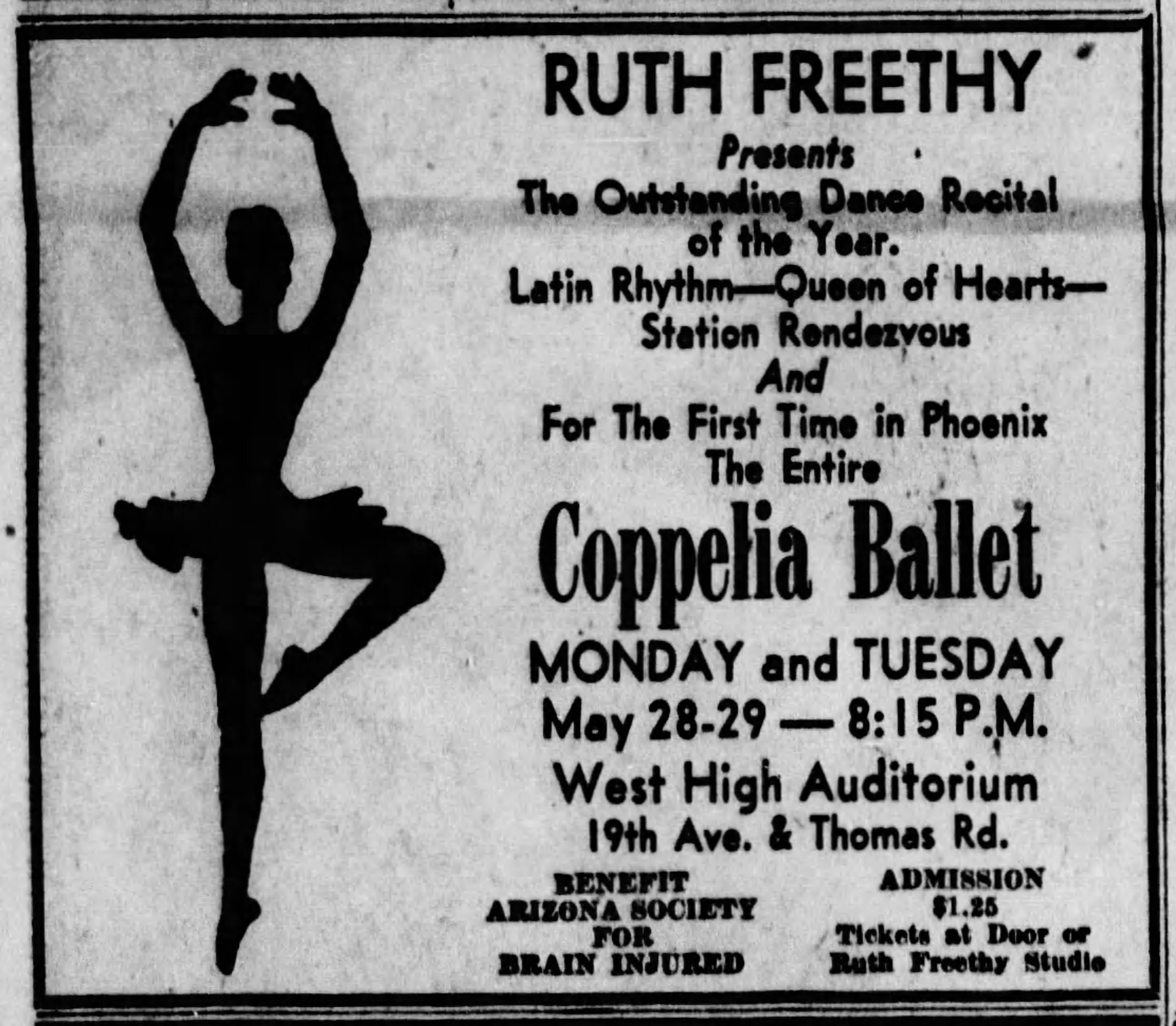Donna Reiner has written many articles over the years for the Arizona Republic and others about Phoenix history and memorials. She is a regular contributor to our newsletter. This month Donna tells us about the influence of Ruth Freethy’s dance instruction on the growth of the arts in Phoenix.
Phoenix, despite rumors otherwise, has always been a cultural oasis in the desert. Theater, brass bands, opera, concerts, vaudeville, dance, and various recitals have entertained Phoenicians for well over 100 years. And today, if one searches carefully, the number of options every day is staggering.
But when it comes to dance, my favorite is ballet probably because my mother started me off before I began kindergarten. Thus, when a recent posting on Facebook mentioned the first ballet studio in Phoenix, I knew there was a story.
Ruth S. Freethy arrived in Phoenix with her husband and infant daughter Dorothy probably in early 1926. In her early 20s, Freethy was eager to start teaching what she most loved: ballet. Within a short time after the family’s arrival, Freethy located a spot at the LDS Recreation Hall which is now the site of the Lath House at Historic Heritage Square. Classes began in the Russian ballet method on October 1,1926.
Freethy’s ballet school must have been popular because after three months at her first location, the school moved to a house at 60 W. Roosevelt. While ballet was the primary focus of Freethy’s School of Dancing, she also offered ballroom dance lessons as well as tap dance.
Of course, there were student presentations. In May 1927, some of Freethy’s students even became the “second bill” at the Rialto Theater. And after the Orpheum opened in 1929, Freethy and the Phoenix Phantoms, her high school students, often performed on that stage.
Business continued to boom and Freethy and her husband, now the school’s business manager, purchased a lot at 16 W. Cypress. Now Freethy could design a studio to fit her needs and needs of her ever-expanding School of Dancing and no longer worry about having to change locations.
An article described the studio as 2000 sq ft with maple flooring, bars at different heights for the younger students and the older ones, and plenty of light. The same article described the new studio as
“the best equipped and most complete school of dancing in the southwest.” And the beautiful brick building painted cream was also the home of the Freethys.
In its spacious new home, the Ruth Freethy School of Dancing blossomed. Freethy’s dancers performed before various women’s groups and on stage wherever one was available. For a brief time, performances were held in the former West High School Auditorium.
Some of Freethy’s students continued to dance after leaving the school. A few though, including Freethy’s daughter Dorothy, joined the studio as instructors.
Ruth Freethy finally retired in 1959 after her dancers and herself presented more than 30 recitals and benefit dances before Phoenix audiences. Queries from former students resulted in this comment from Donna Ballard: “I attended [The Freethy School of Dancing] around 1958 when I took tap and ballet. I loved the wintergreen candies she gave us all at the end of the lesson. She was very kind to this pudgy little dancer and always made me feel special.”
Donna Reiner is the co-author of three books about Phoenix history.










